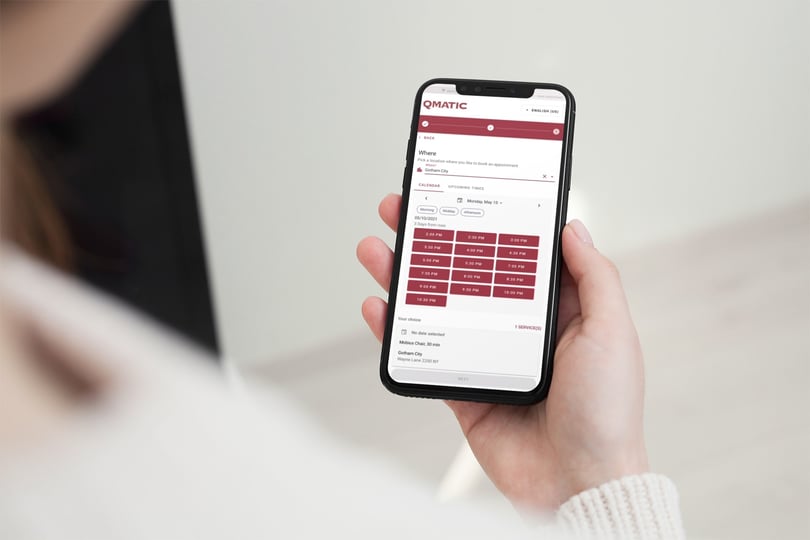- Blog Overview
- Knowledge
- How to reduce no-show rates: 5 practical tips

How to reduce no-show rates: 5 practical tips
Khachatur Muradyan |June 23 2021 | 5 min
Every time a visitor doesn’t show up at the appointed time, your preparation and administration work are wasted. In this article, I’ll explain why you want to reduce your no-show rates and how you can succeed with it. In the end, you can download a guide to learn more about improving your appointment management.
What is the no-show rate?
A no-show rate is the number of visitors who don’t show up for their appointment divided by the total number of scheduled appointments. For example, if you have fifty scheduled appointments per day and every day you have two visitors who don’t show up for their appointments, then your no-show rate is four percent.
Avg. number of visitors who don't show up for their appointment
divided by
Avg. oft he total number of scheduled appointments
= no-show rate
When calculating your no-show rate, you must use average numbers from an extended period, as they can vary significantly in the short term.
Why reduce no-show rates?
When a visitor doesn’t show up at the appointed time, you don’t just lose an hour. Before the visitor arrives, service staff usually need to prepare documents and perform other administrative work.
- Each no-show results in lost revenue, increased costs, and more workload.
It’s in the interest of all service providers to reduce the no-show rate. The average rate varies from industry to industry. Some reports indicate that, e.g., in healthcare, as much as 10-12% of appointments in a clinic are canceled, up to 35% of all appointments made by the patients are re-schedules.
How to reduce no-show rates
During my career, I have seen organizations use a variety of tactics to attempt to reduce the no-show rate. Below are some successful examples of getting more visitors to show up at the appointed time.
1. Always keep to the schedule
First of all, you must set a good example. If you let visitors wait a long time in a waiting room before their appointment, it’s difficult for them to understand why they should respect time, and most likely, they will not stress about punctuality for their next appointment. Therefore, an organizational commitment should be made to always provide the required service at the appointed time.
2. Send reminders
Most no-shows occur because the visitor simply forgot the time. An effective way of reducing no-shows is to send reminders. The best practice is to send a confirmation at the time of scheduling and then a reminder shortly before the appointment. This gives the visitor an opportunity to re-schedule if they have a new, additional commitment.
3. Reward the behavior you want to receive
By expressing gratitude for each visitor who shows up on time, you motivate them to show up on time for their next appointment. As you reward their behavior, you’ll create an environment where visitors know they will receive the service they require in a timely and friendly manner.
4. Follow up
Some no-shows or delays cannot be avoided. For example, many unpredictable events can prevent the visitor from showing up. As a service provider, it is important that you treat every visitor, whether early or late, with a positive attitude. Yet by actively following up no-shows, you show the visitor the importance of each appointment, which often reduces future no-shows.
5. Set up pre-payment
In some cases, allowing customers to pre-pay for services may be appropriate. This will often be a good enough reason for customers or patients to attend their appointment. This may not be appropriate in all cases, for example, if there is no payment required for the service.
The benefits of smart Appointment Scheduling Solutions
Some service providers have recently discovered the benefits of the next generation of appointment solutions. By automating the process of sending confirmations and reminders and all other no-show administration work, you both save time, and reduce your no-show rates.
In this guide, you can read more about how smart Appointment Scheduling Solutions can improve your appointment management.
Topics
Appointment management



